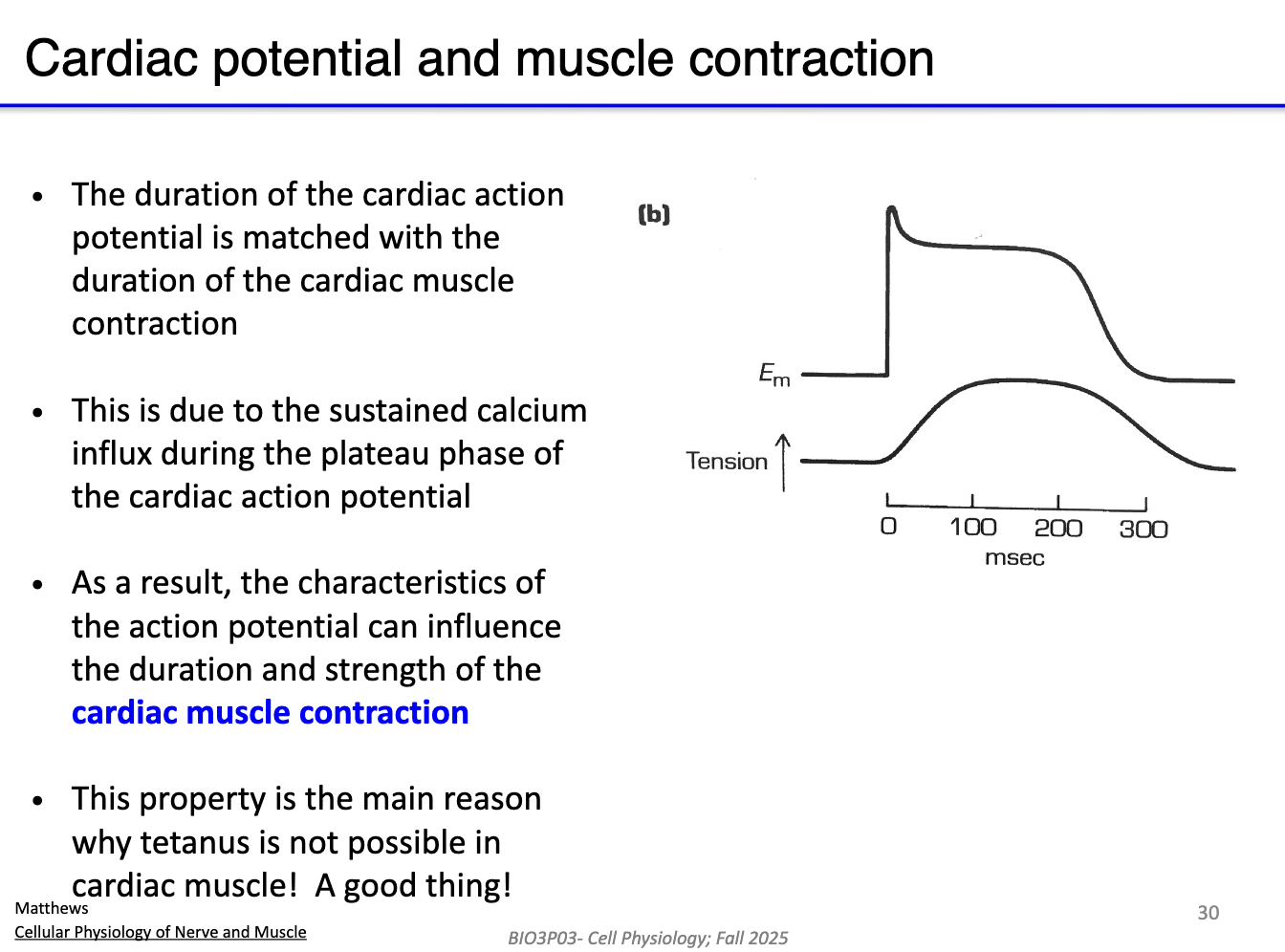12. The Action Potential Part 4: General Properties of Action Potentials
1/18
There's no tags or description
Looks like no tags are added yet.
Name | Mastery | Learn | Test | Matching | Spaced |
|---|
No study sessions yet.
19 Terms
What determines the threshold of an action potential?
Requires a large enough depolarization (ex: -40 mV).
Depends on voltage sensitivity of ion channels
Occurs when Na+ permeability > K+ permeability
Threshold = point where enough voltage-gated Na+ channels open to counter K+ efflux through leak channels
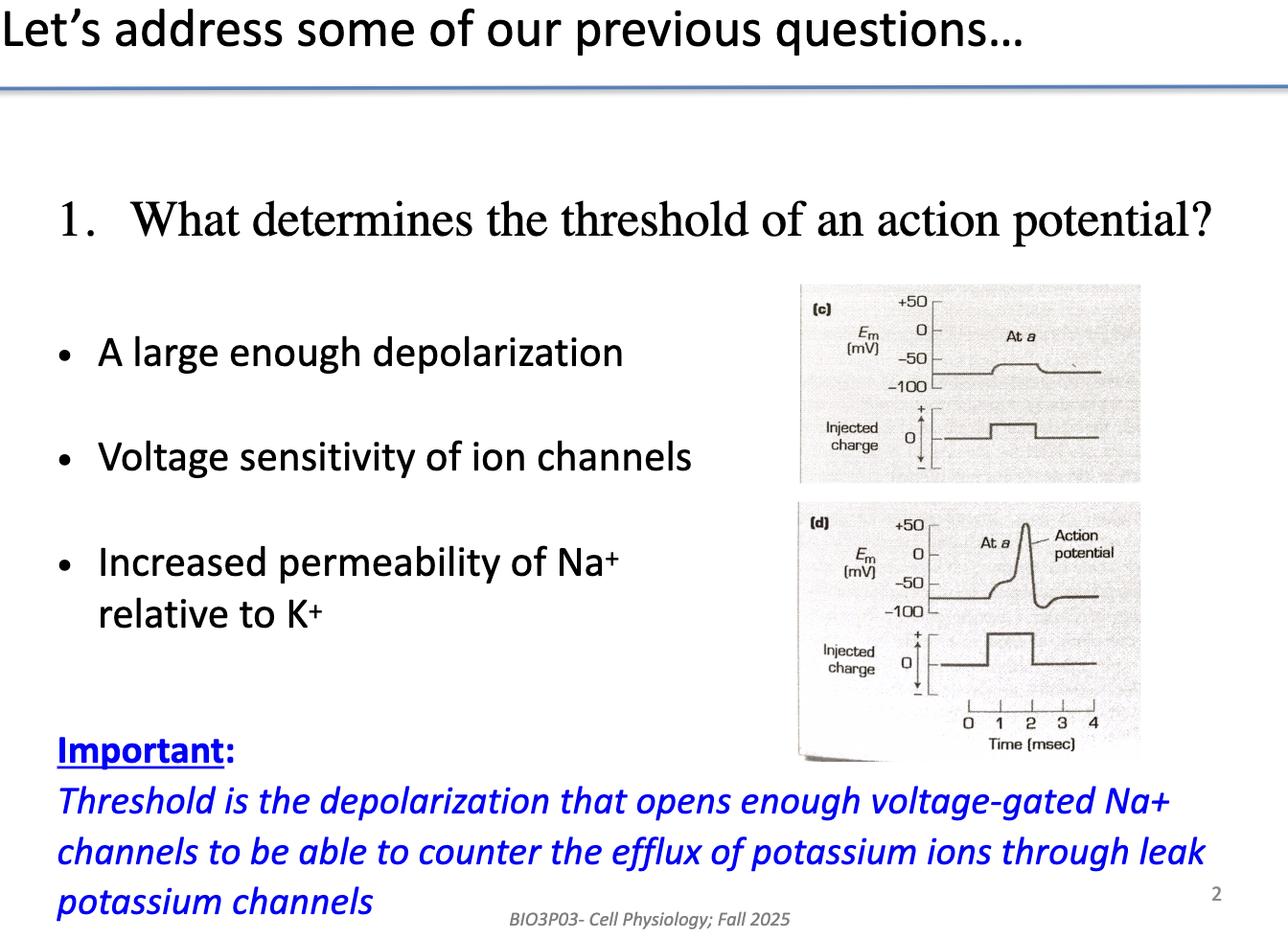
How do we know the ionic conductances that occur during an action potential?
Determined using voltage clamp experiments
Measure macroscopic ionic currents
Use impermeant ions in solution to isolate specific ion effects
Can also apply ion channel blockers (e.g., TTX for Na+, TEA for K+)
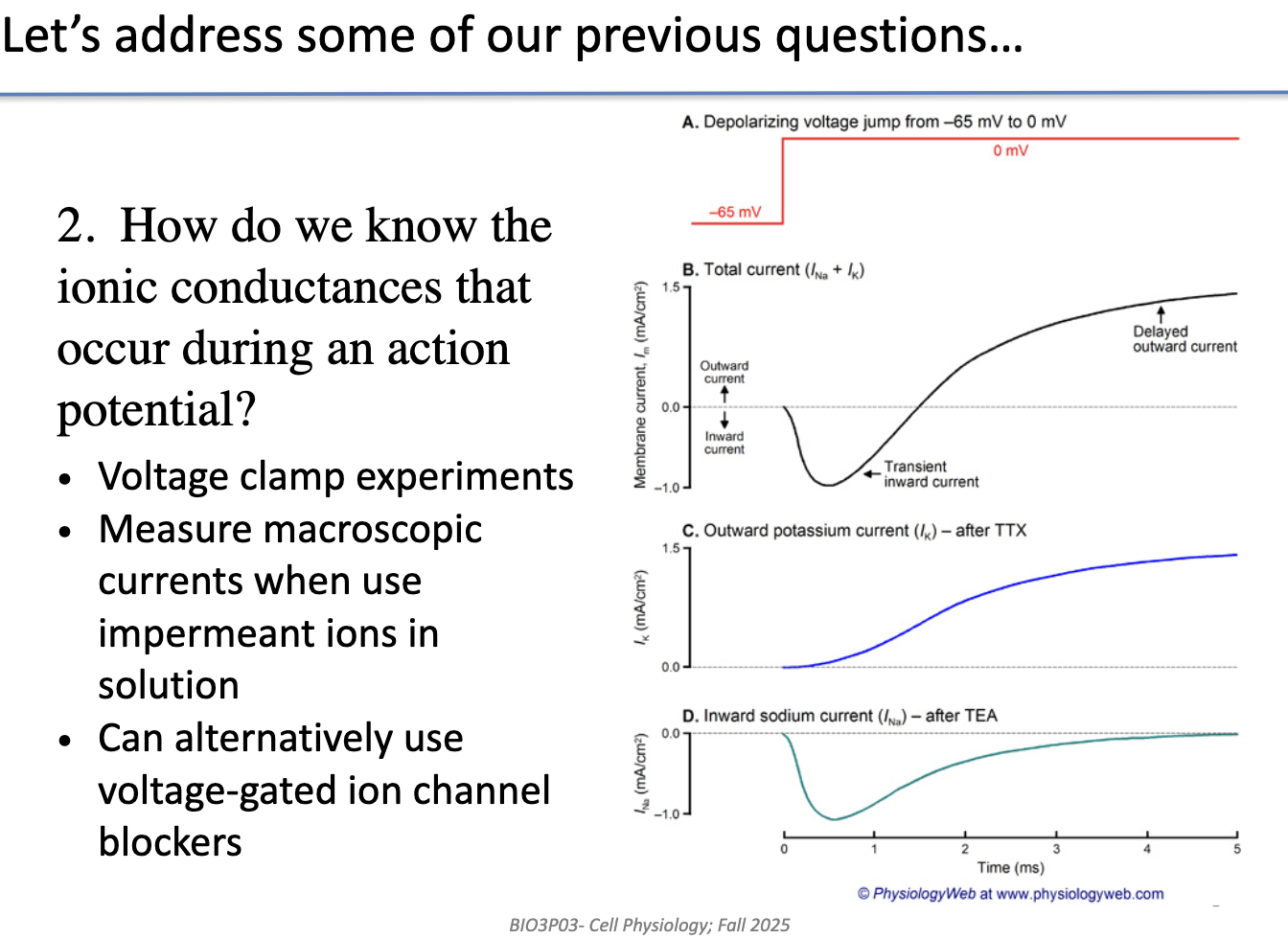
What other questions are important about action potentials?
What factors affect AP propagation?
Are there different types of APs (e.g., skeletal vs cardiac)?
How is a toilet flush similar to an action potential?
Threshold: minimum force (depolarization) required to trigger flush (AP)
All-or-none: pushing harder doesn’t make a bigger flush (AP size fixed)
Refractory period: can’t flush again until tank refills (Na+ channels recover)
Direction: water flows one way; AP travels in one direction
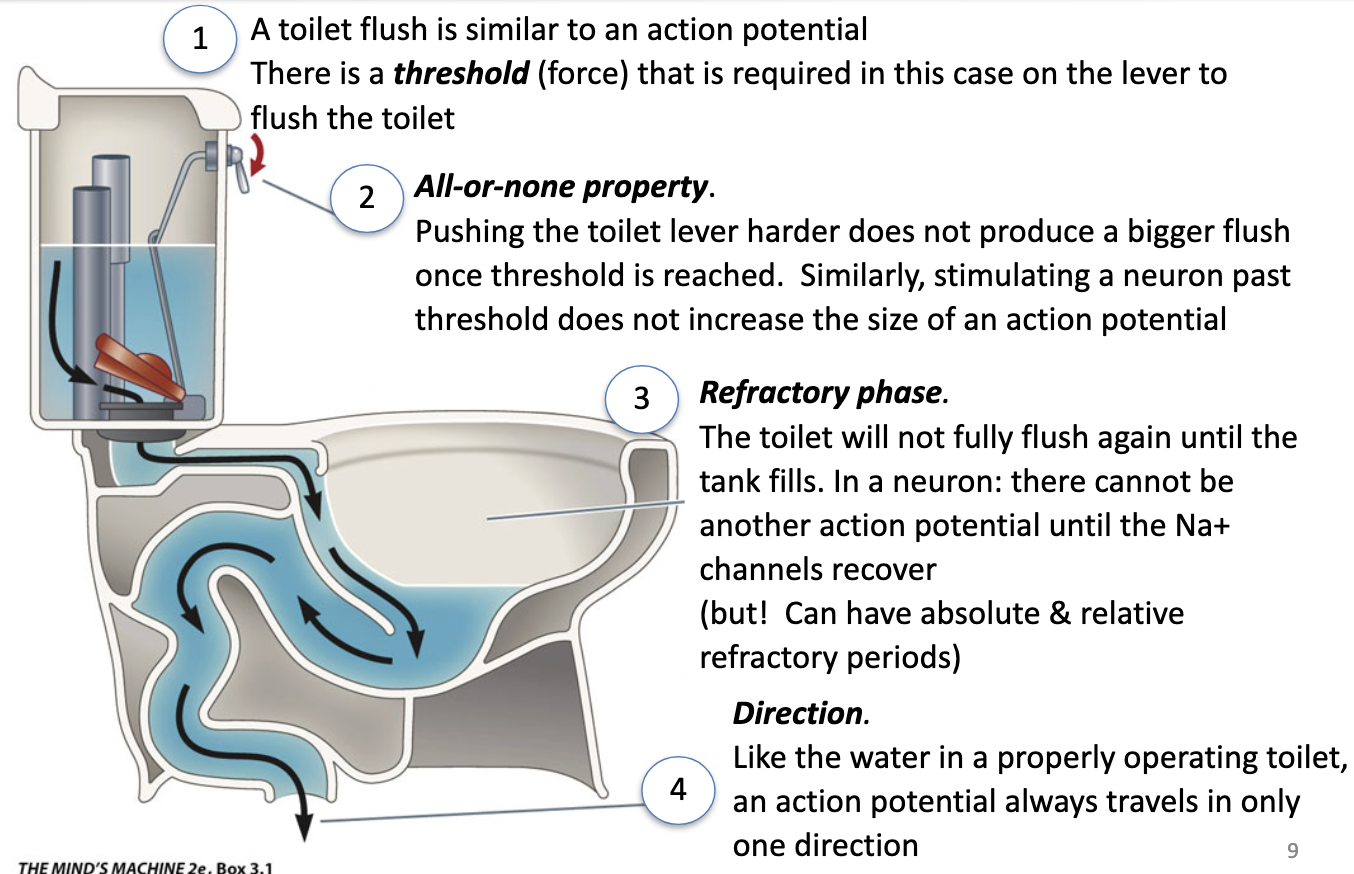
How is the threshold for an action potential determined experimentally?
Inject current and observe membrane potential change
Only when Vm reaches threshold → AP occurs
Example:
Stimulus 1 & 2 = subthreshold (no AP)
Stimulus 3 = threshold reached → AP produced
Near-threshold stimuli may cause aborted or local responses
**Note: For this class, if it reaches threshold consider it AP
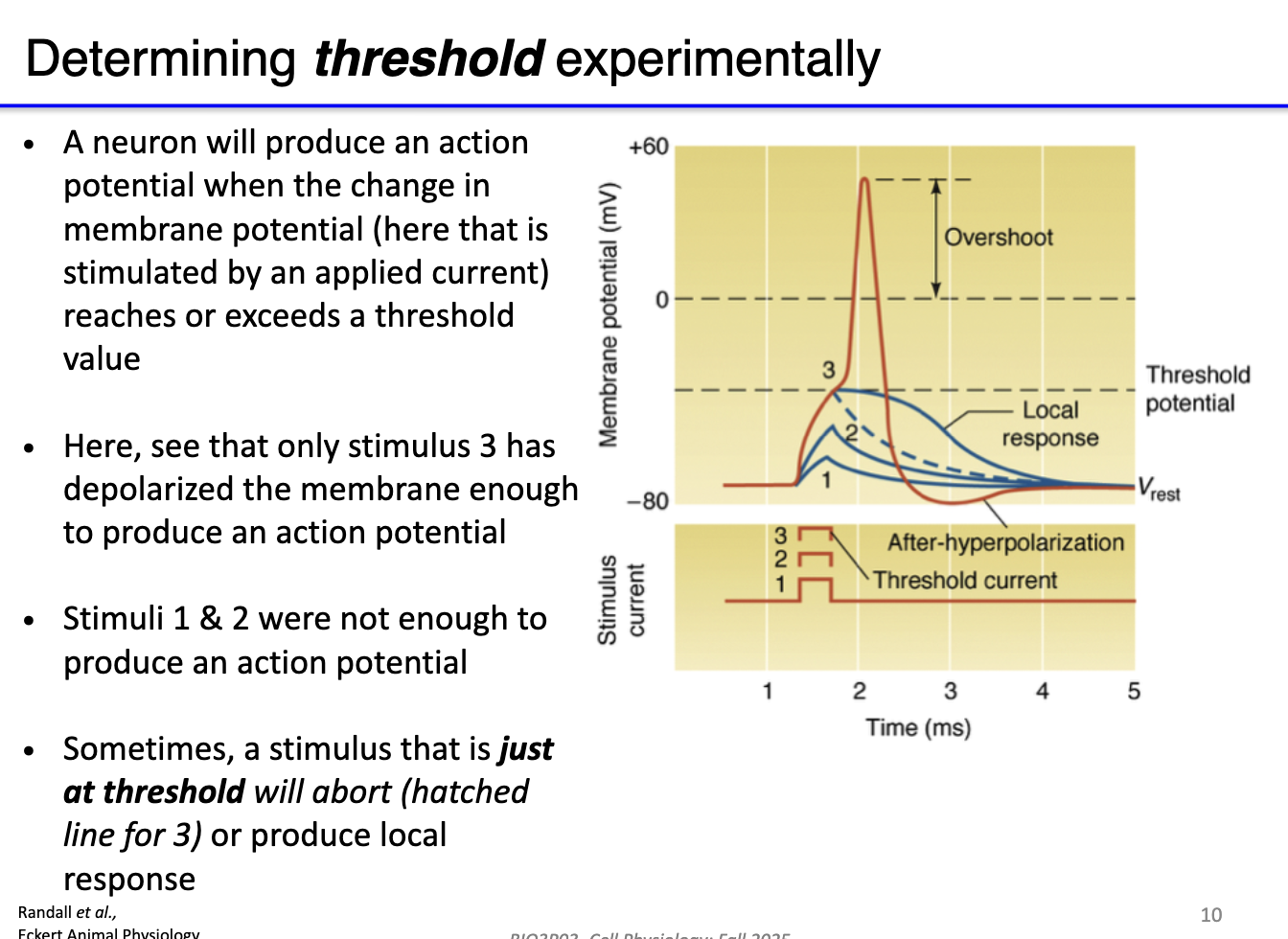
How does signal summation affect reaching threshold?
Neurons receive many inputs (excitatory & inhibitory)
Summation at axon hillock determines AP generation
No summation: subthreshold signal, no AP
Temporal summation: repeated graded potentials over time adds up
Spatial summation: simultaneous graded potentials from multiple neurons add up
Integration: combines excitatory (+) and inhibitory (–) signals

What does the all-or-none nature of action potentials mean?
Subthreshold currents: no AP generated
Once threshold is reached, AP always occurs
Size and shape of AP remain the same, regardless of stimulus size (as long as above threshold)
Difference is in speed of AP
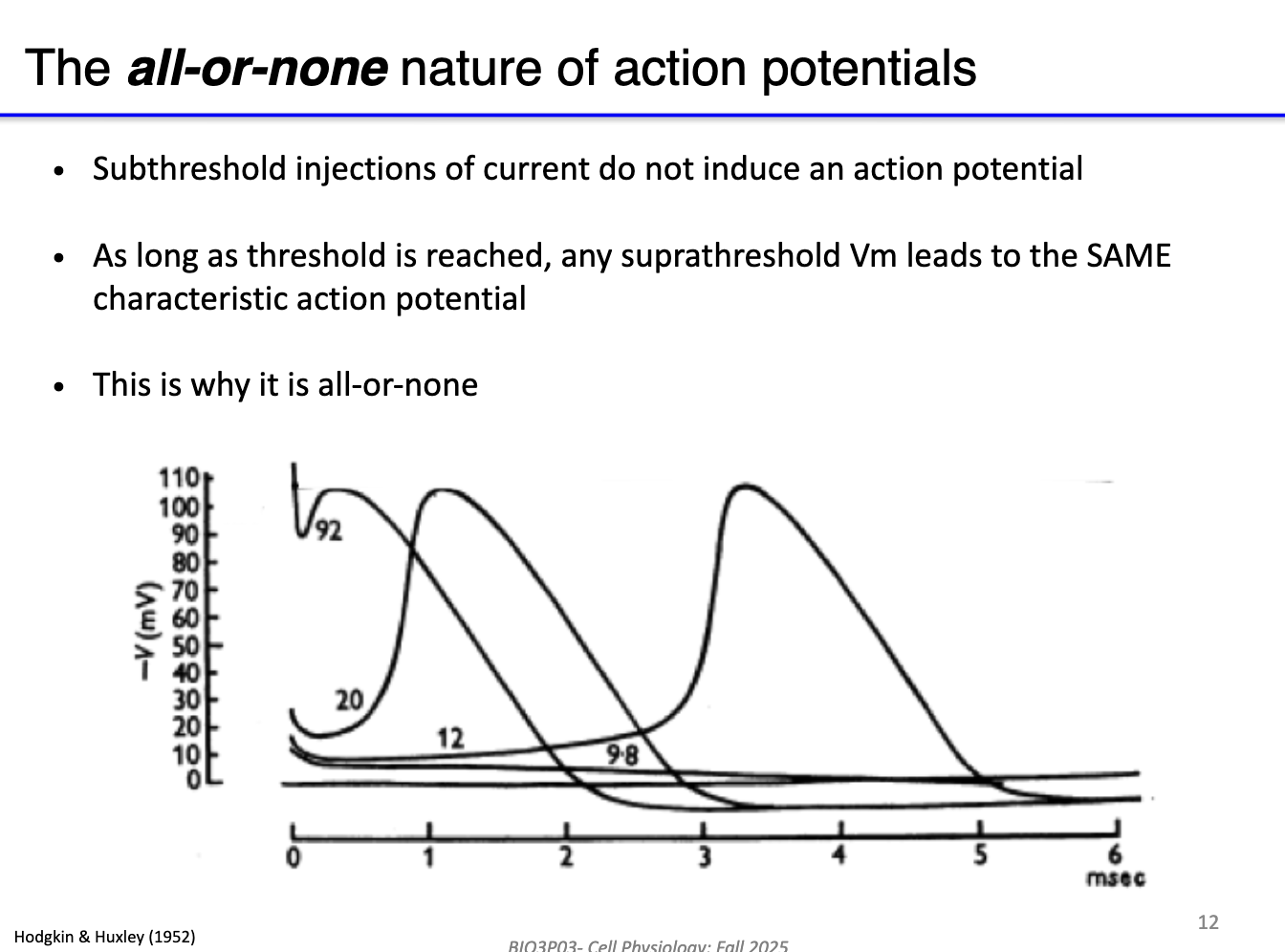
What happens if stimulus amplitude increases beyond threshold?
AP size stays constant (all-or-none)
But frequency of APs increases with stimulus strength
Neurons can fire up to 200–300 APs per second (Hz)
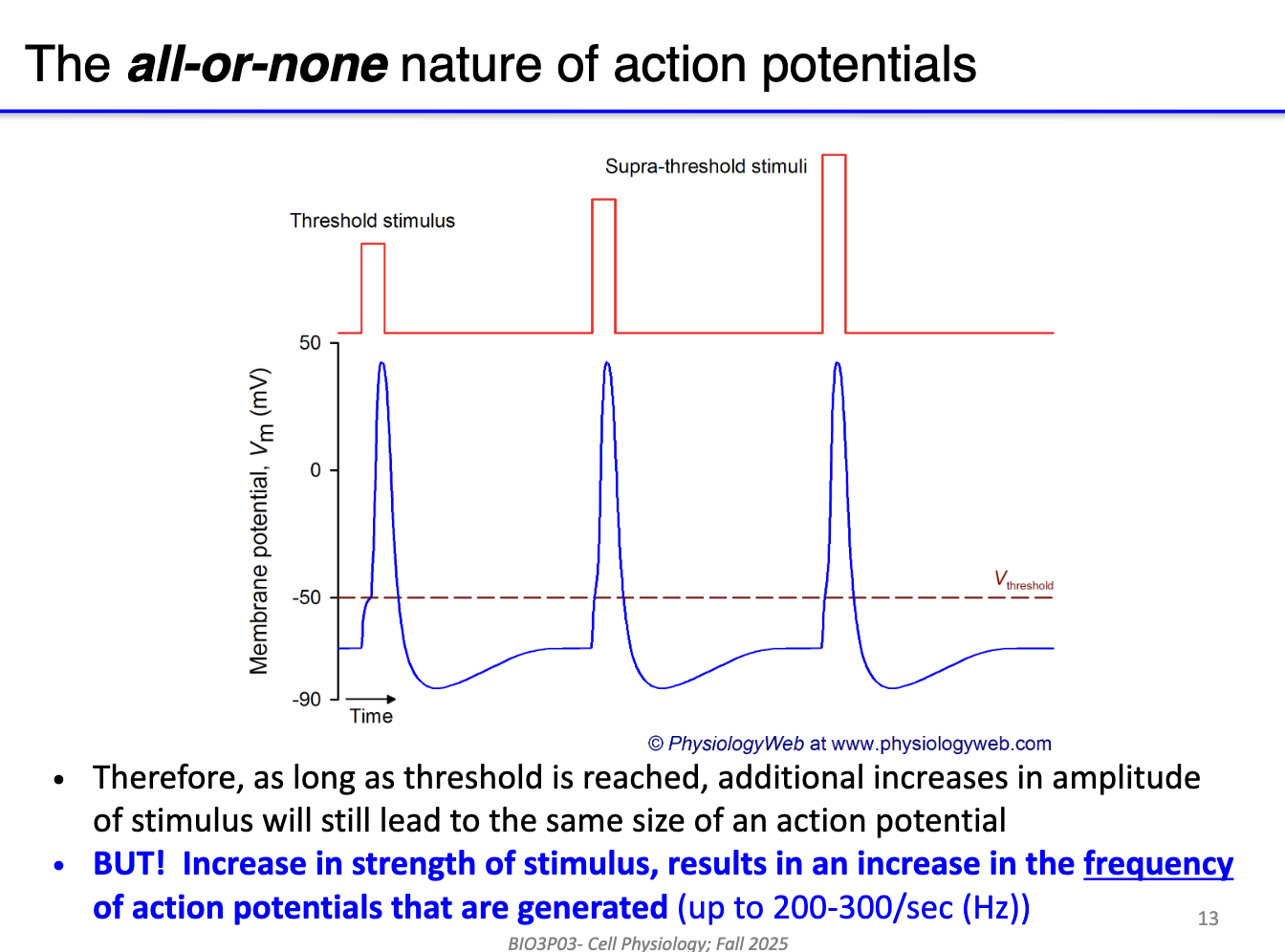
What is the refractory period, and why does it matter?
Refractory period: Right after an AP, a second AP cannot of the same size occur, no matter how strong the stimulus.
Lasts for a short recovery time (~10 ms in squid axons).
Reason: Voltage-gated Na⁺ channels are inactivated and cannot reopen immediately.
Partial or “early” APs: During recovery, small or incomplete APs may appear.
These are due to some Na⁺ channels starting to recover from inactivation, but not enough to generate a full AP.
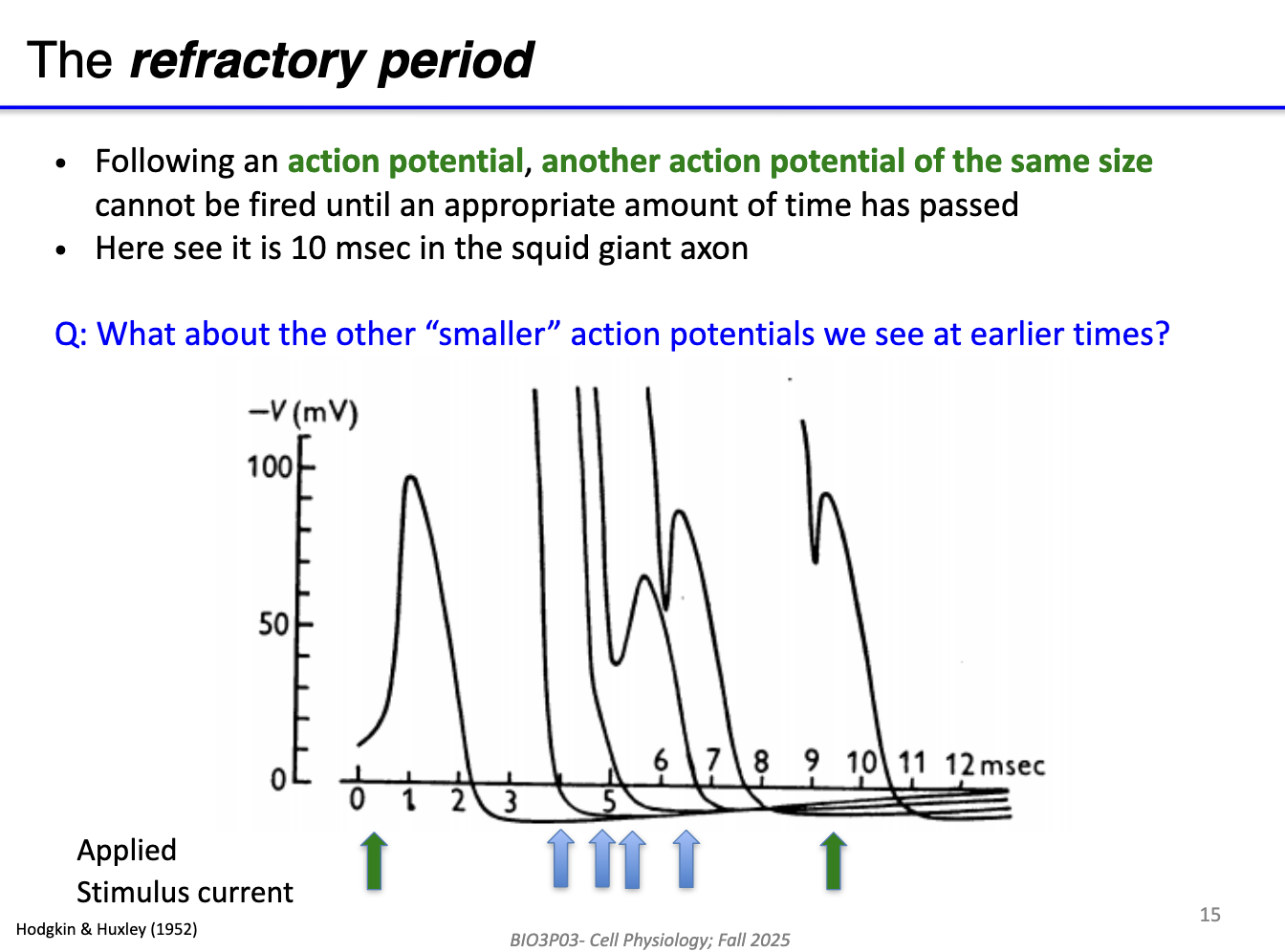
What are the absolute and relative refractory periods?
Absolute refractory period (1–2 ms):
No new AP possible
Na+ channels are inactivated
Relative refractory period (3–4 ms):
Stronger stimulus can trigger smaller amplitude AP
Na+ channels recovering; K+ permeability still high
Duration varies by neuron and hyperpolarization depth
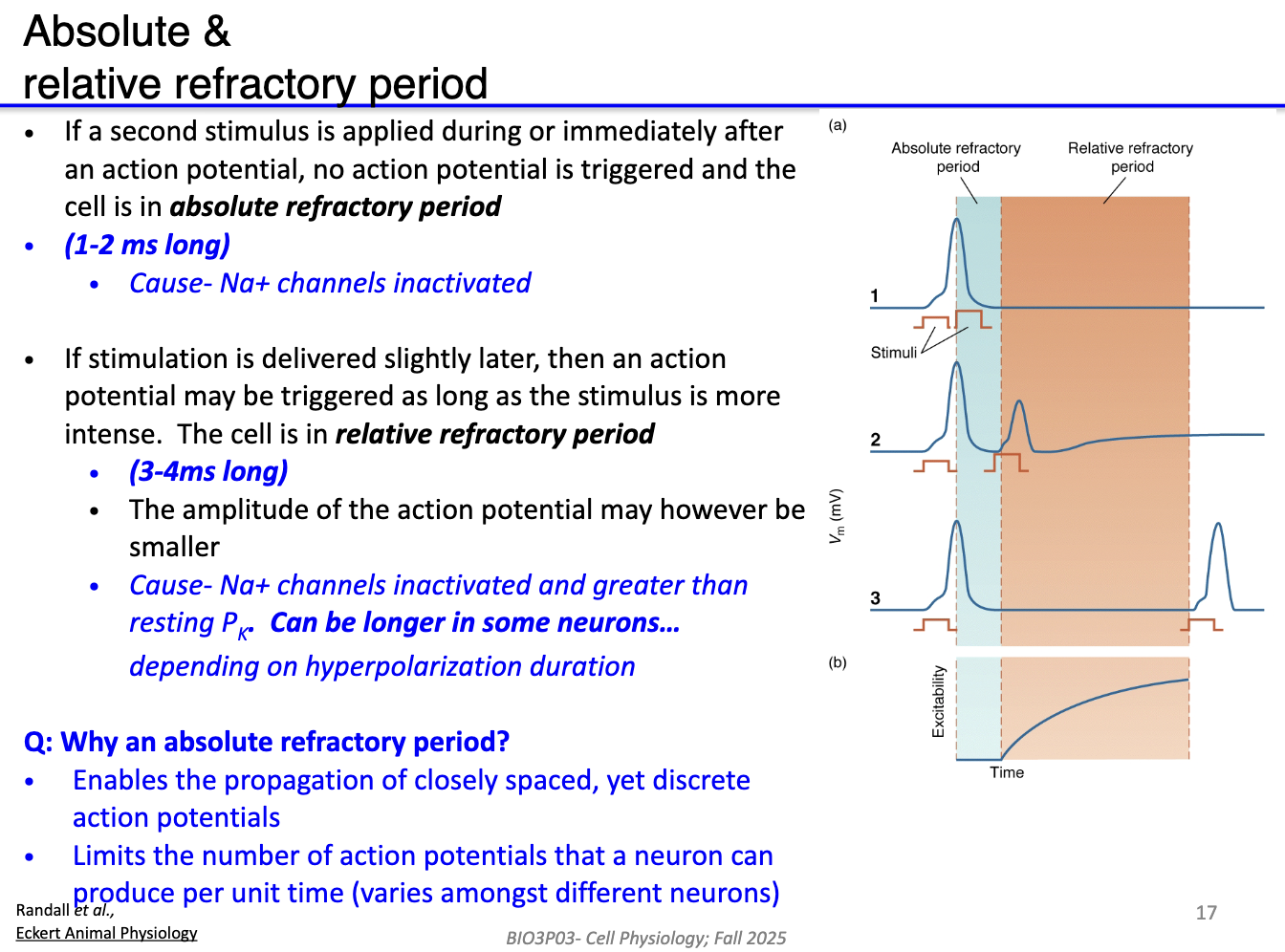
Why is an absolute refractory period necessary?
Ensures discrete, separate APs (prevents overlap)
Controls maximum firing rate of neuron
Enables one-way propagation of APs along the axon
How does an action potential propagate down an axon (regenerative)?
Voltage-gated ion channels along the axon allow AP to regenerate
Each new section of membrane depolarizes the next
Unidirectional movement due to Na+ channel inactivation behind the AP
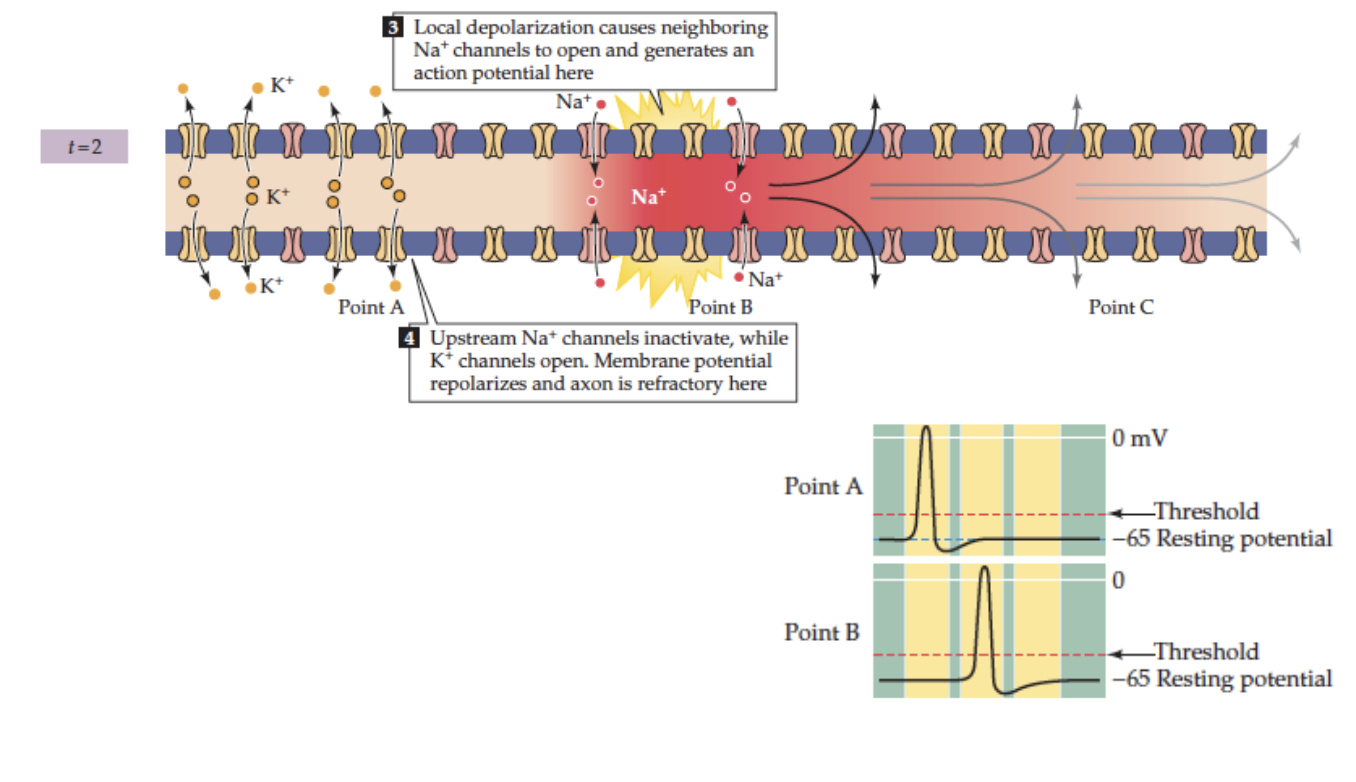

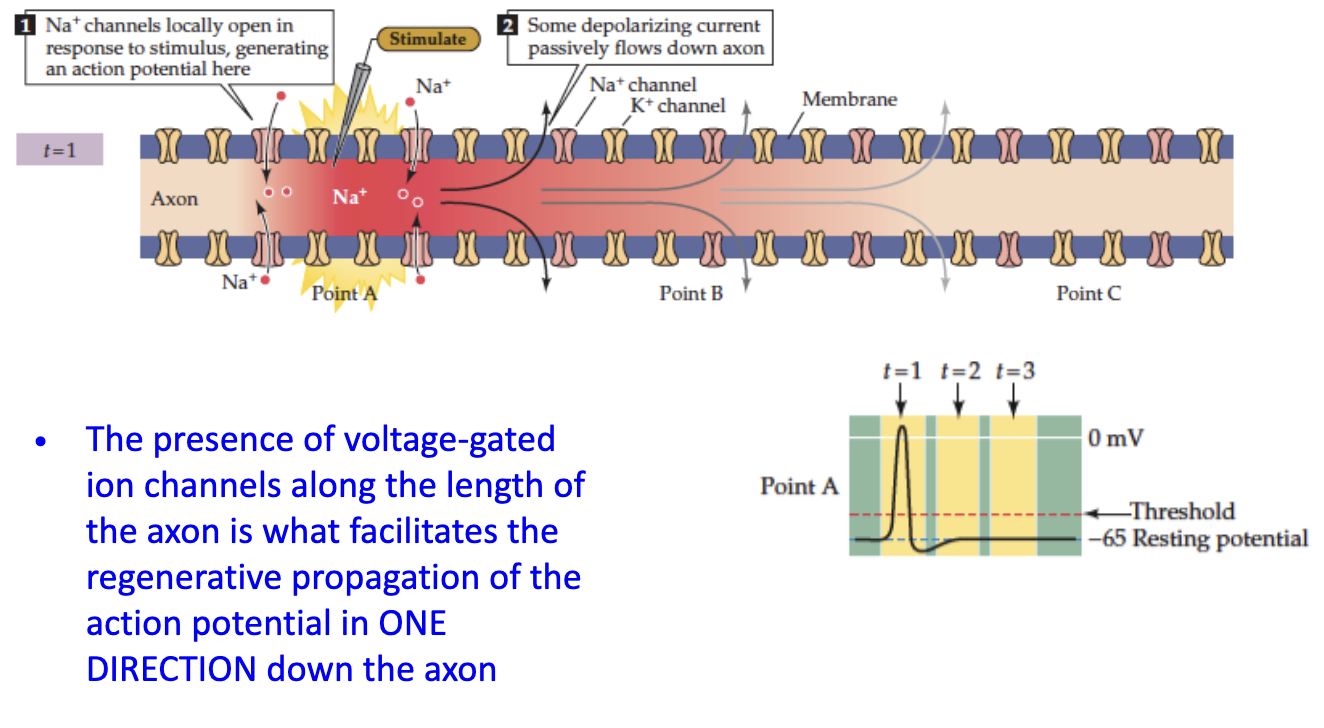
What affects conduction velocity of an action potential?
Conduction velocity = time for signal to travel neuron length
Larger axon diameter → less internal resistance → faster conduction (volume > SA = current flows more easily)
Explains why squid giant axon is so large (rapid escape response)

How does myelination affect conduction velocity?
Myelin insulates axon → reduces current leak
Allows saltatory conduction: AP jumps between Nodes of Ranvier
Increases speed and efficiency of AP propagation
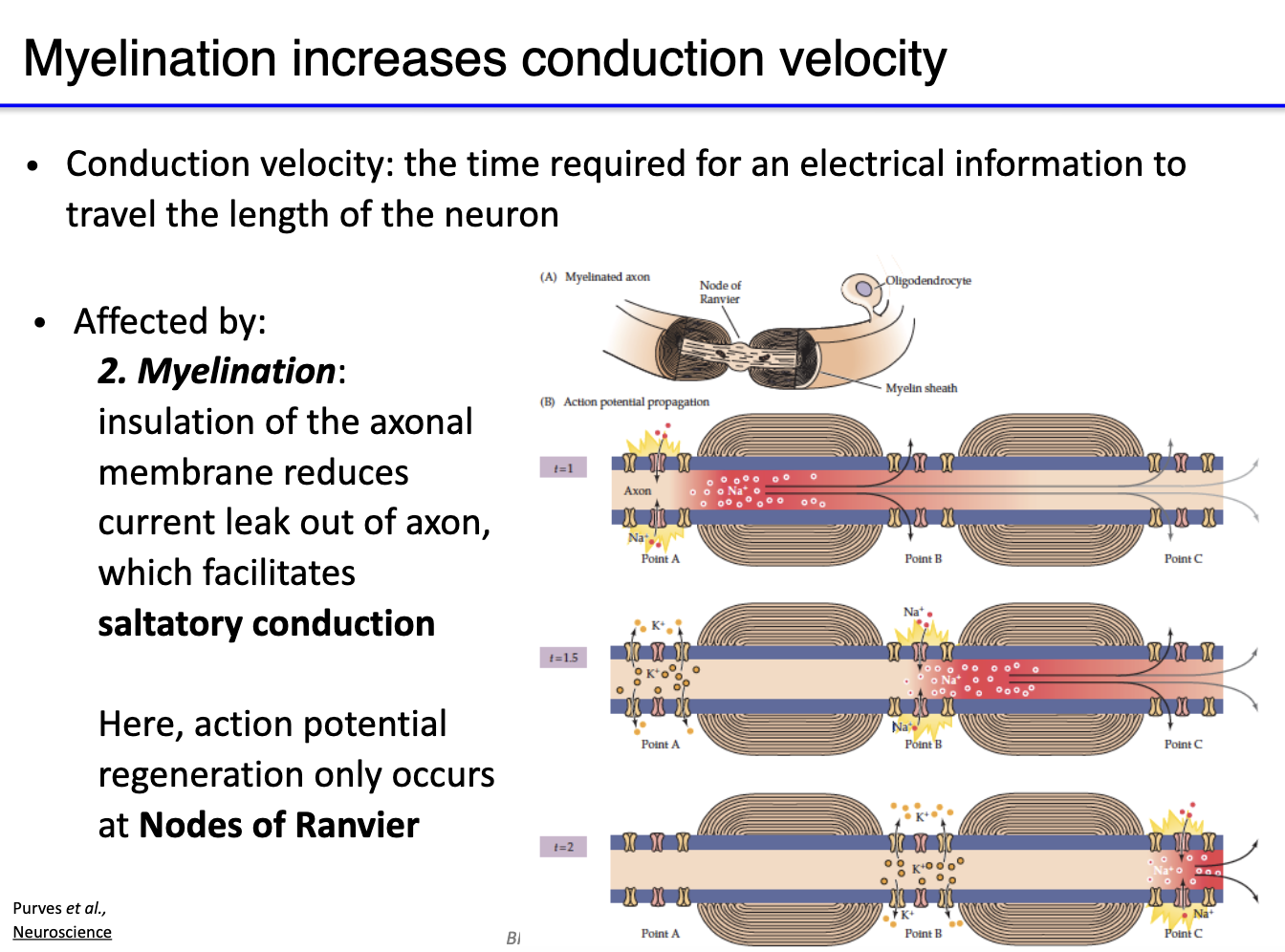
How do myelinated and unmyelinated axons differ in conduction speed?
Myelinated axons: faster conduction (less leak, saltatory jumping)
Unmyelinated axons: slower, continuous conduction along membrane
Axons evolved to increase conduction velocities by
(1) Insulating
(2) Allowing diffusion without electrostatic decay instead of relying on the slower speeds of opening/closing dynamics
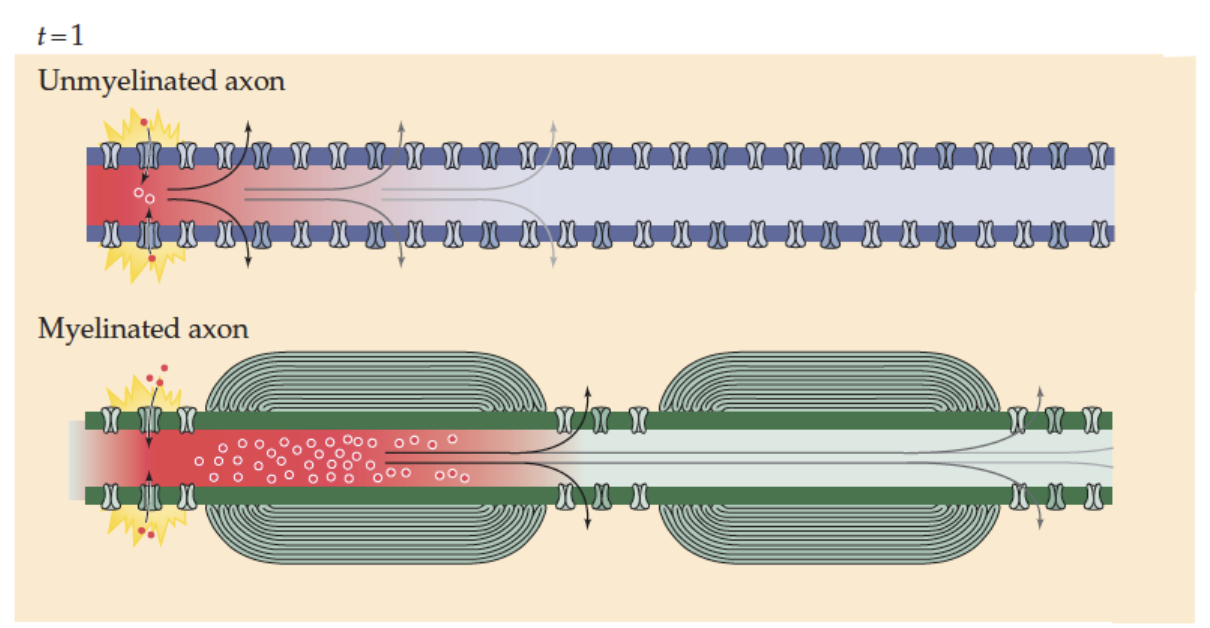
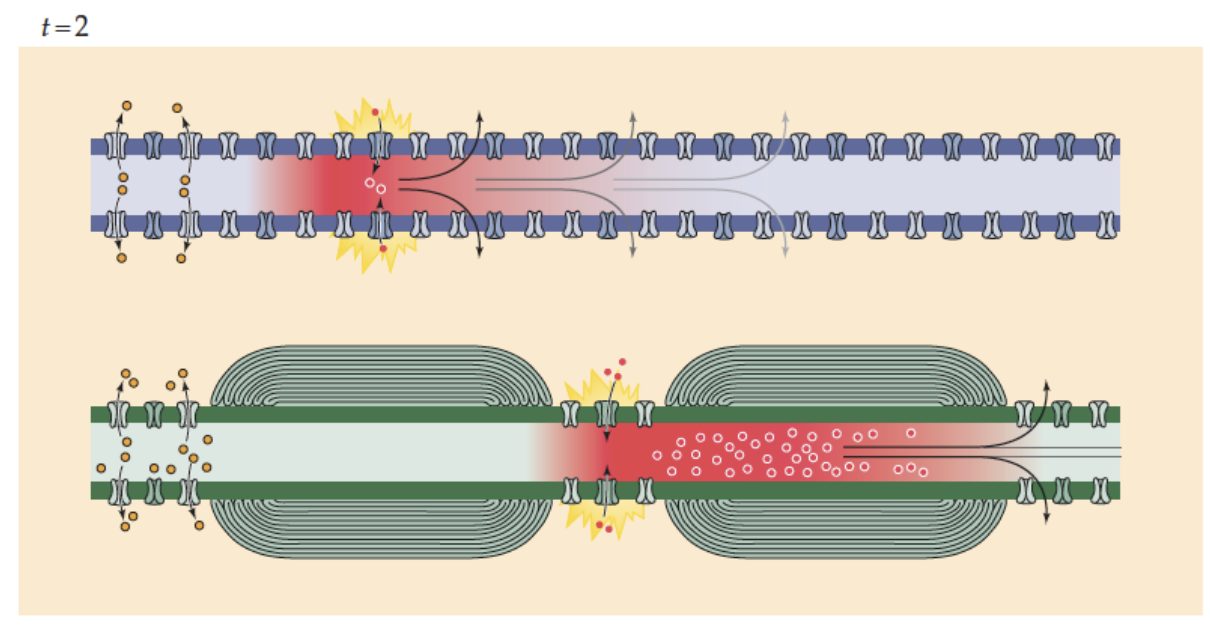
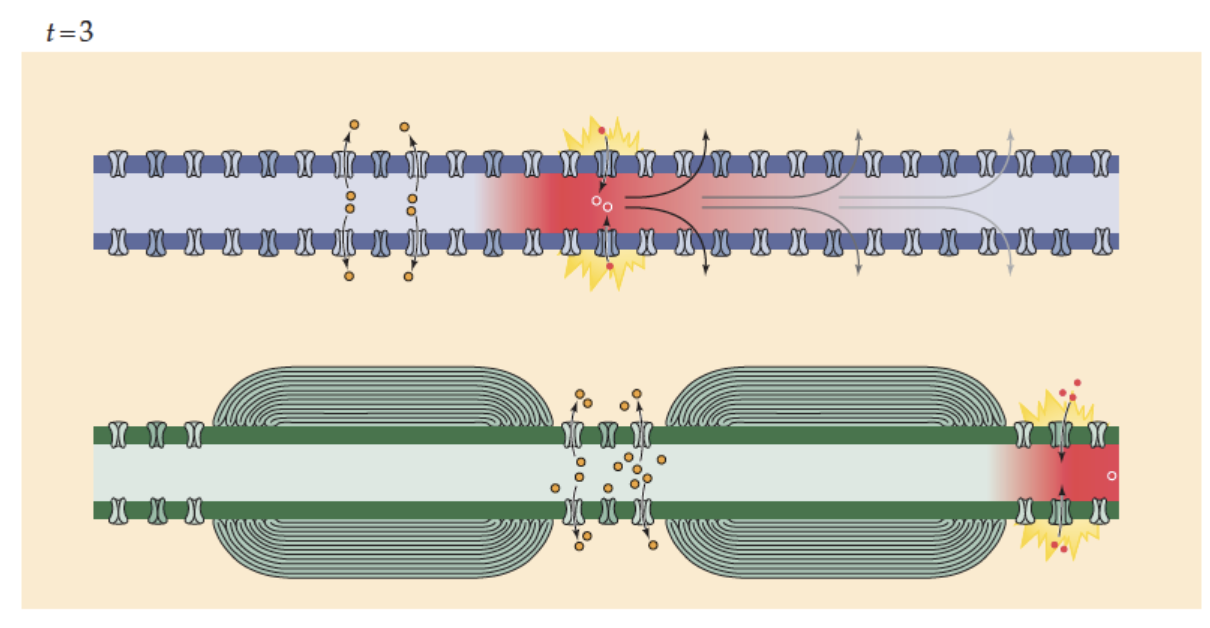
How does conduction velocity differ among organisms?
Varies by species and axon structure
Larger diameter or more myelinated neurons → faster signals
Adapted to the organism’s needs and environment (e.g., escape response)
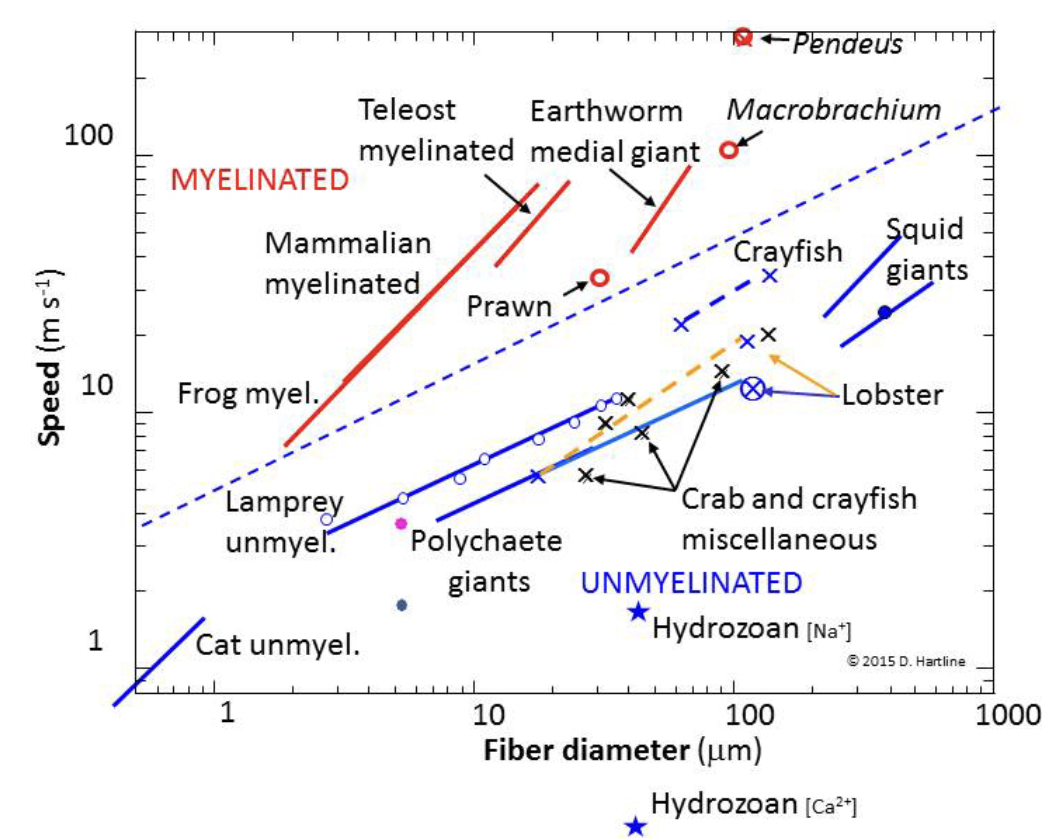
How does a skeletal muscle action potential differ from a neuron’s?
Similar in mechanism (voltage-gated Na+ and K+ channels)
Directly triggers muscle contraction
AP is shorter than contraction
AP acts as electrical “trigger” for muscle movement
Ex: High frequency APs → sustained tension (seen in tetanus/muscle spasms)
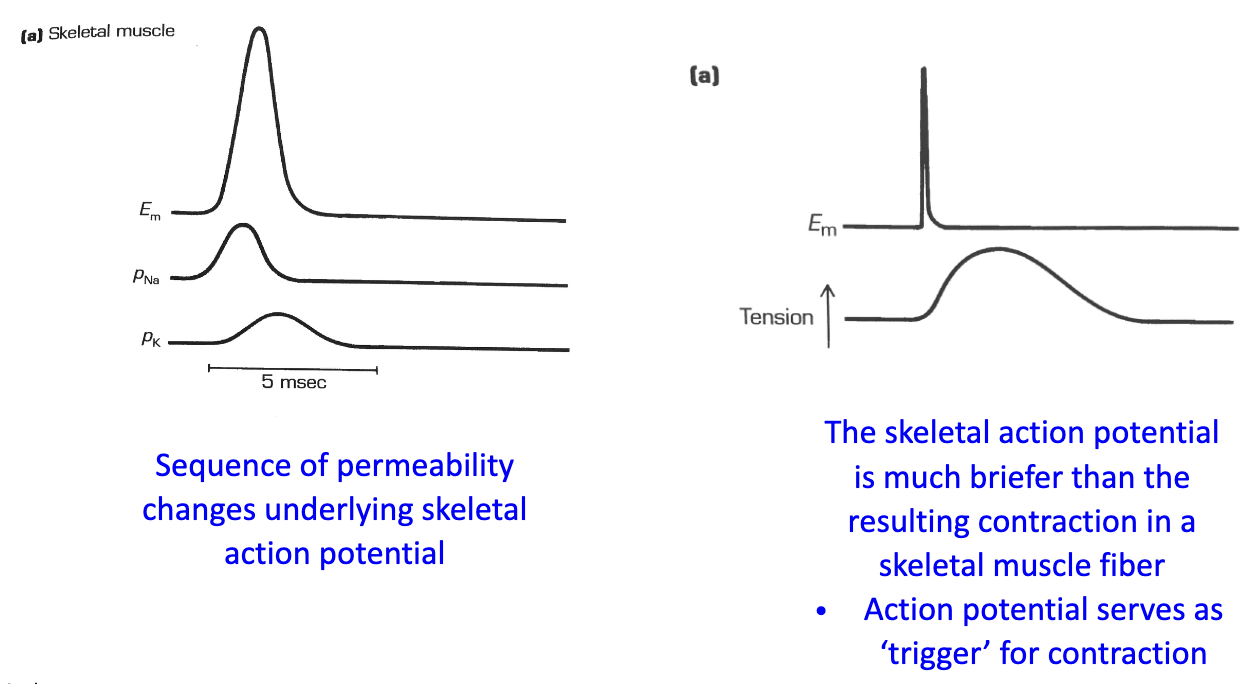
How is the cardiac action potential different from skeletal muscle?
Depolarization: voltage-gated Na+ and Ca2+ channels open (inward flow. Na+ channels quickly inactivate)
Plateau phase: Ca2+ influx balanced by K+ efflux (maintains depolarization)
Repolarization: Ca2+ influx decreases, K+ efflux increases
Creates longer AP duration than skeletal muscle
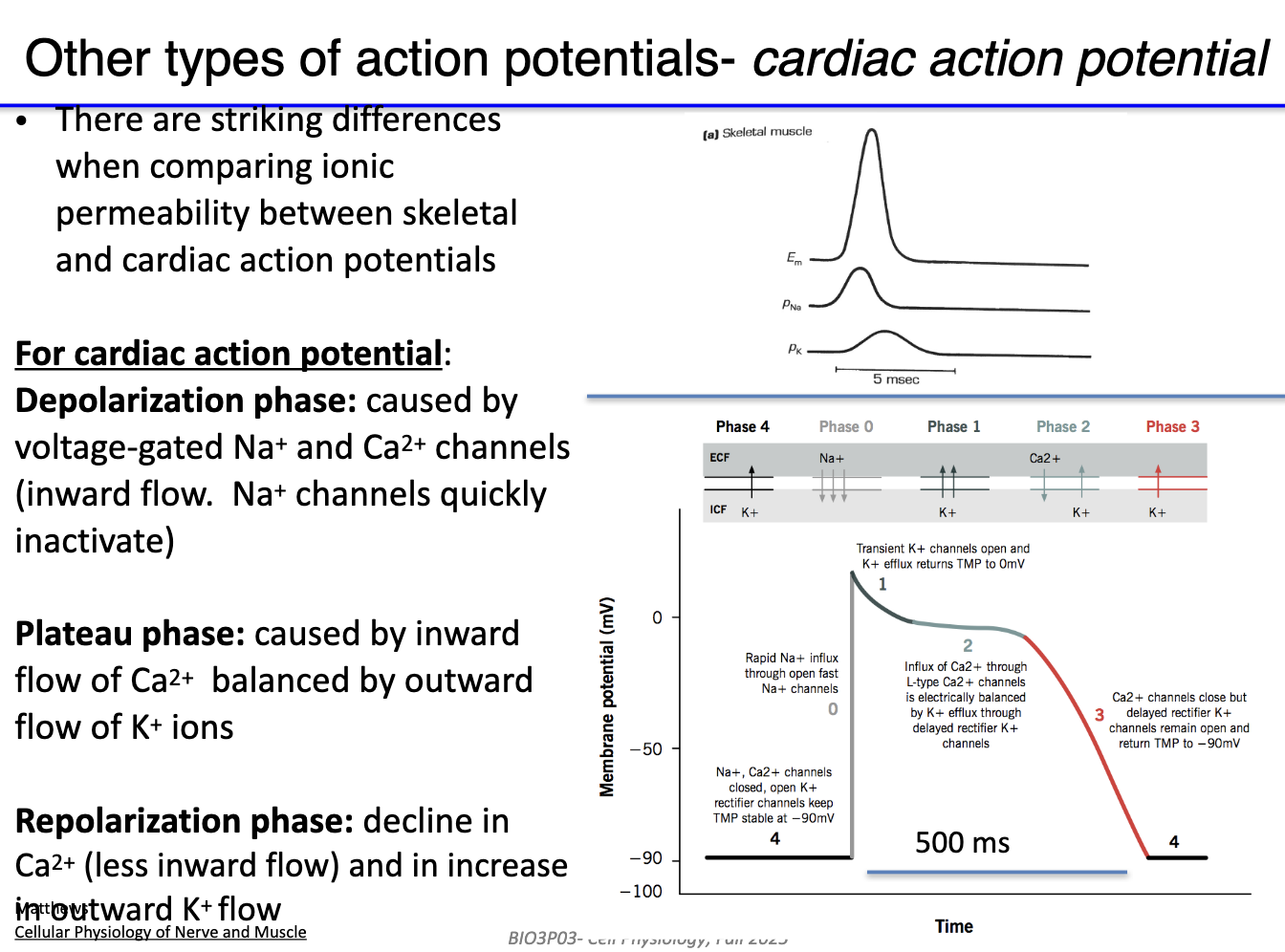
How is the cardiac action potential linked to muscle contraction?
Cardiac AP matches the duration of contraction
Due to sustained Ca2+ influx during the plateau phase
AP duration influences strength and timing of cardiac muscle contraction
Prevents tetanus (continuous contraction) → essential for heart function
